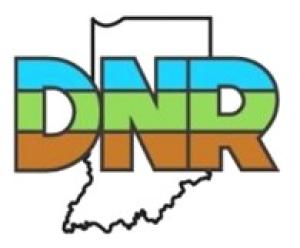
Enjoy fall fun and Halloween events
A cornucopia of fall fun and Halloween events are happening at DNR properties throughout October.
Campsite decorating, pumpkin decorating, costume contests and a variety of other events. You can come for one activity, stay for a day, or spend the entire weekend at most events.
For details regarding a fall or Halloween event near you, or one that’s well worth a road trip, visit the DNR Calendar at calendar.dnr.IN.gov.
Enjoy Indiana's fall foliage
It's going to be a beautiful autumn at Indiana State Parks. Enjoy a day hike or make a reservation at one of the seven State Park Inns and take full advantage of Mother Nature's colorful show. Enjoy the video above we made two years ago highlighting the gorgeous scenery.

Buy your deer license today
If you typically buy your license at a store, skip the long lines the day before your hunt and buy it now. Find a list of license retailers and be sure to check your license for accuracy before you leave the store.
If you plan to purchase your license online, log in to your Access Indiana account before the season begins—don’t risk delays due to technical difficulties.
Interested in harvesting multiple deer or hunting across multiple seasons? Consider buying a deer license bundle, which allows you to harvest up to three deer (only one may be antlered) during the Archery, Firearms, and Muzzleloader seasons.

Sign up to hunt on one of Indiana’s participating private properties
Are you looking for a new place to hunt? Indiana Private Lands Access program (IPLA) has a new self-service sign-in system for hunters who want to hunt on private properties. Small game, deer, and waterfowl hunters can view available locations, photos, and maps, as well as property rules.
Hunt windows can be up to three days long, depending on when you register. The system resets at 8 p.m. ET on the final night of each 3-day cycle. Hunters can sign up for the same property only twice in a row. Be sure to sign up early during each window.
Game bird (pheasant and quail) and turkey hunts are still administered through the reserved hunt draw system.
As IPLA continues to work with private landowners, more properties will likely be added.

Bonus antlerless quotas lowered in 4 counties
Epizootic hemorrhagic disease (EHD) has affected the deer herd in Wayne, Union, Fayette, and Franklin counties this year. As a result, DNR has reduced the County Bonus Antlerless Quotas in these four counties to a maximum of one.
This quota change will help DNR maintain the deer herd in these counties for future seasons.
Humans are not at risk for contracting EHD, which is a viral disease that may affect white-tailed deer to some degree every year. In many cases, the disease only affects small geographical areas, but can become widespread, affecting a larger-than-normal portion of the deer population.
DNR wants to hear about sick and dead deer displaying signs of EHD, which include swelling around the head and neck, weakness, excessive salivation, or wading in or around water. Report sick or dead wildlife here.

Indiana Tree Project continues to grow Indiana's forests
The Indiana Natural Resources Foundation and the Division of Forestry were recently joined by Huston Solar to plant 2,000 trees in Morgan-Monroe State Forest.
Part of a successful year for the Indiana Tree Project, the day in the forest created a lasting impact on Indiana's public lands.
Sandhill cranes begin fall migration at Jasper-Pulaski
Sandhill cranes can be seen at Jasper-Pulaski Fish & Wildlife Area from late September through December. Crane numbers peak in mid-November. The best time to view is sunrise, from the Goose Pasture viewing area. Check out the video above to get a sense of what you'll experience on your visit to Jasper-Pulaski FWA.

Testing for chronic wasting disease
Hunters who want to have their deer tested for chronic wasting disease (CWD) can bring their deer to select Fish & Wildlife areas and State Fish Hatcheries during the hunting season.
Deer heads can be dropped into designated coolers or hunters can make an appointment for their deer to be sampled by a biologist during office hours. The 2022-23 sampling locations and their hours of operation are listed on our website.
Hunters who submit a deer for CWD testing will receive a metal tag reminiscent of Indiana’s historical deer harvest confirmation process.
Alternatively, hunters may submit their deer to the Purdue Animal Disease Diagnostic Lab (ADDL) for testing for a fee. Hunters should complete the submission form and follow the shipping instructions on Purdue ADDL’s website.
Biddinger receives national award

Eric Biddinger, a nursery and compliance officer with the DNR Division of Entomology & Plant Pathology, has received the 2022 Carl Carlson Distinguished Achievement Award in Regulatory Plant Protection.
Biddinger is the first inspector from Indiana to receive the honor, which is a national recognition of field level inspectors’ service. The Horticulture Inspection Society (HIS) nominated Biddinger for the Carlson award after presenting him its Robert McAdams Award, which recognizes superior achievement of professional development in horticulture inspection. Biddinger serves as central regional secretary for HIS.
Waterfowl hunters should be aware of possible highly pathogenic avian influenza surge
Indiana, along with many other states, was affected by an outbreak of highly pathogenic avian influenza earlier this year.
Avian influenza declined through the summer months; however, some states have had a recent increase in wild bird deaths associated with the disease. DNR advises hunters to be aware of a potential resurgence of avian influenza as the waterfowl hunting seasons progress.

U.S. Fish and Wildlife Service proposes listing tricolored bat as endangered species
To help prevent the extinction of the tricolored bat, The USFWS has proposed listing it as an endangered species.
This designation will provide added protections to the bat, along with their winter and summer habitats, caves and forests.
Tricolored bat populations have declined by nearly 90% across more than half of the area this species occurs in. A cold-dwelling fungus that occurs in caves, called white-nose syndrome is the leading cause of population declines in tricolored bats, as well as other cave-hibernating bat species. This fungus causes a disease in hibernating bats that rapidly burns through limited fat reserves and leads to death.
You can help the tricolored bat by not exploring caves that bats use during winter months, decontaminating clothes and equipment between caves, and minimizing disturbance to bats when caving.

Subscribe to Outdoor Indiana for calendar, more
Outdoor Indiana magazine’s 2022 calendar, which was included in the November/December 2021 issue, recently won first place in the Association for Conservation Information publications contest. The 2023 calendar will be included in this year’s November/December issue. Don’t miss out. If you don’t already get Outdoor Indiana, subscribe now at ShopINStateParks.com or by calling 317-233-3046.
The Foundation celebrates and preserves Indiana’s natural legacy by raising funds to support the Indiana Department of Natural Resources and its programs.





